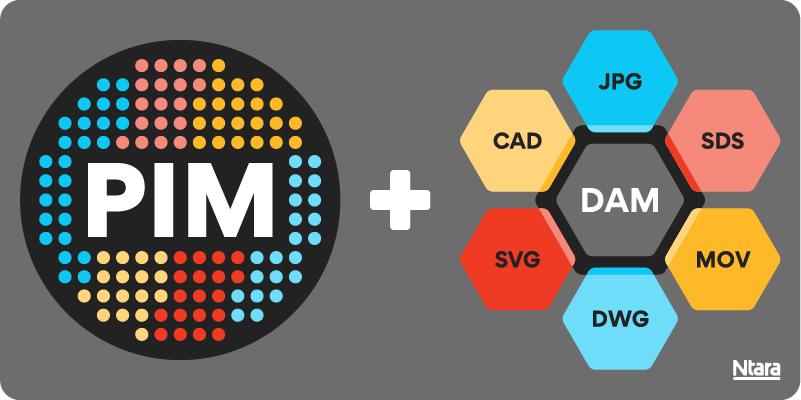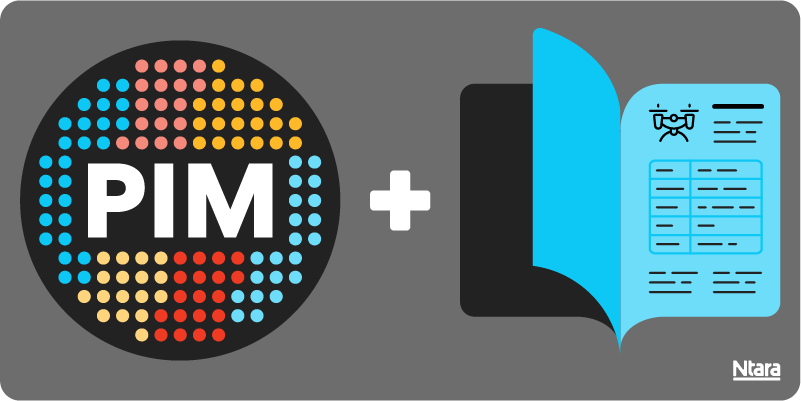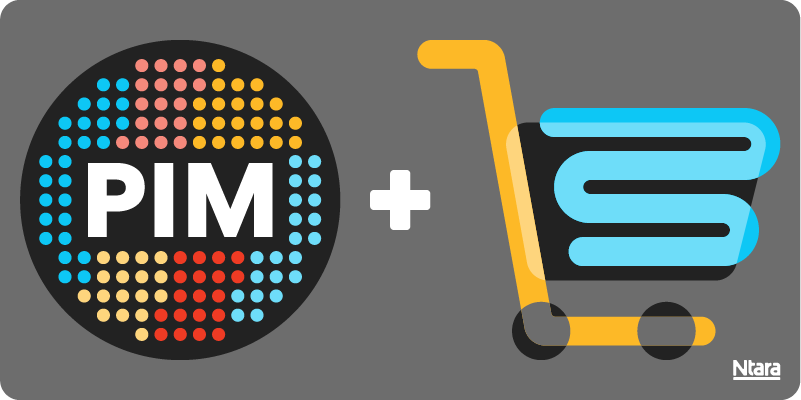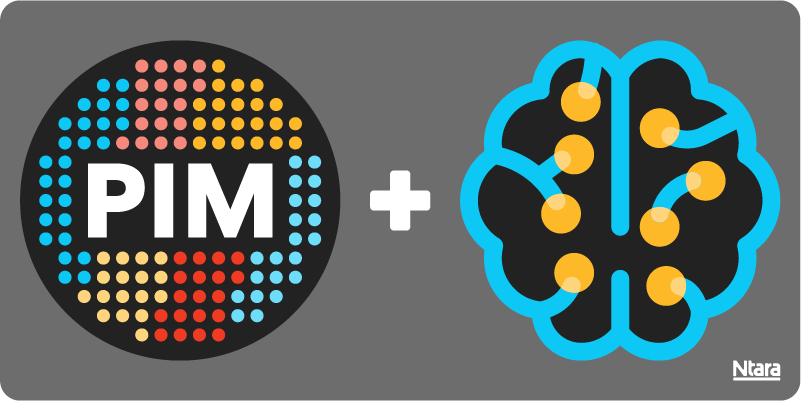For companies without PIM, establishing a single source of truth is a huge deal. But your strategy can’t stop there. What should come next is incredible ROI.

It’s time to activate your data
Integrations can seem like a simple, IT-centric topic. That’s until you talk to people with tangible results like:
“Our sales growth has been 2x higher than our competitors…”
“We’re saving 2,700 man hours per year…”
“Our ecommerce business has grown 48%…”
“We have reduced returns by 50%, saving us millions of dollars.”
These are real-world PIM benefits, shared via Ntara customer stories and multiple analyst reports. Each story represents a company leveraging integrations to move further along the data maturity model and gain significant ROI.
How integrations can advance your data maturity
Once you’ve implemented PIM and have good user adoption, the next goal is to have your PIM talk to (i.e., syndicate or connect) at least one channel or party.
In many cases, this first connection is ERP to PIM. Integrating ERP directly with PIM helps establish a base record of 10 to 20 attributes (e.g., unique identifier and logistical data) that are readily available, accurate, and consistent.
However, this is just the beginning. In the following phases, all the parties that require your data can receive it through some type of PIM flow. Then, your time is freed to focus on adding extensions, like generative AI, to unlock ROI.
Four integrations that boost your ROI

1. PIM + DAM
The integration of PIM + DAM is especially important. This duo helps manufacturers and distributors enhance the product experience, save time, and mitigate risk.
Columbus McKinnon Corporation is an excellent example of a manufacturer on the path to significant ROI. They manage 76,000+ SKUs and over 16,000 digital assets across 19 regions/languages within a fully integrated PIM + DAM solution.

2: PIM + print automation
PIM + print automation is a game-changer for catalog creation. It helps you produce any PDF or InDesign files you need (e.g., data sheets, price lists, catalogs, etc.) using accurate data from a trusted source, in a fraction of the time it takes to create them manually.
For example, our partner, InBetween, helped a flooring manufacturer connect its print automation software with Akeneo PIM. The result? The manufacturer reduced the generation time for 500 data sheets from 20 hours to just 1.5 hours—and is now 13 times faster than before.
Arkema, a building materials company, saved more than 2.5 million Euros by freeing thousands of employee hours with the automation of technical datasheet production in various languages.
Sto, as a leading international manufacturer of products and systems for wall claddings and coatings, connected their data source with InBetween and reduced generation time of their 700- page catalog from several months to just 12 hours.
Vitakraft, a worldwide leader in household pet products with 20 global sales and distribution companies, automated their print process, reducing production time of their catalogs. Additionally, for the first time, the company was able to include the GTIN identification number as a barcode in its catalogs, thanks to the efficiency of the automated process.
Read more InBetween case studies here.
Key benefits of print automation
Automated document generation: Produce data sheets, catalogs, price lists, leaflets, flyers, brochures, and more, eliminating the need for manual intervention and reducing turnaround times from months to mere hours.
Real-time data source connection to your data source: Any changes in data, such as prices, are promptly applied to the generated documents. No copy and paste tasks of content and assets are needed.
Customization: Easily customize documents by planning layouts, adding or removing products, and tailoring content such as product ranges for specific regions or target audiences. Complex data, graphics, and tables can be easily integrated.
Global brand consistency: Master file(s) and templates ensure that all documents are in line with your corporate identity.
Various output formats: InBetween supports various output formats, including print-ready InDesign, web-ready PDFs, or flipbooks, as well as marketing materials collaterals using office formats and/or image formats. This caters to diverse business needs for both digital and print channels.
Language variants: Businesses operating in multiple regions/languages can simplify the process of generating catalogs or other materials in different language variants, enabling efficient localization efforts. Countries retrieve documents with up-to-date information in the language, currency, and product range they need.
Businesses that implement PIM and print automation can expect many benefits:
- Improved workflows
- Centralized creation
- Improved quality
- CI-conformity with your other essential technology tools (e.g., ERP, CMS, ecommerce, PIM)
- Reduced time-to-market
- Cost savings

3: PIM + B2B ecommerce
B2B buyers want helpful, compelling online product experiences, even if your site doesn’t offer a buy button. In this environment, a simple ERP data flow won’t cut it; buyers want more than inventory and part numbers. They expect manufacturers to be the trusted source of complete product information.
That’s why many B2B organizations implement PIM as a precursor to ecommerce — and feel an urgency to do so.
Royal Brass & Hose knows this well. Thankfully, they implemented PIM and integrated with ecommerce just before the Covid-19 pandemic. They were able to shift to digital sales without missing a beat, growing 33% MoM online during a time when many brands were left behind.

4: PIM + AI
PIM + AI integration is all about harnessing some of the most innovative AI apps available today to create efficient, hyper-personalized product experiences based on your trusted data.
This integration unlocks so many exciting opportunities. For example, at Akeneo Unlock 2024, we saw their new Supplier Data Manager, which uses AI to onboard suppliers at speed and scale. We also saw how users can access generative AI in the PIM to create bulk product descriptions and romance copy in minutes. It can also translate descriptions into 50+ languages, making your products global-ready almost instantly.
Rexel, an electrical supplies distributor with more than 2.5 million products, is already using this integration for fantastic ROI. By combining AI tech from Unifai with Akeneo PIM, they’ve:
- Upgraded 800,000 product descriptions to meet the ETIM international standard
- Filled in missing data or suggested improvements with up to 98% accuracy
- Analyzed and classified 12,000 products in just three months
This kind of efficiency not only saves time but also significantly boosts ROI by enhancing the customer’s journey with high-quality, reliable product information.
The numbers show:
Where should you start?
Technical integration is just one part of the equation. To unlock ROI, you’ll need to understand:
- Where and how do your customers shop?
- What do they expect at each touchpoint?
- What foundational elements do you already have in place?
- What else do you need to meet customer expectations?
- What do your internal people need to succeed?
Ntara is here to help you navigate these waters, give us a shout.